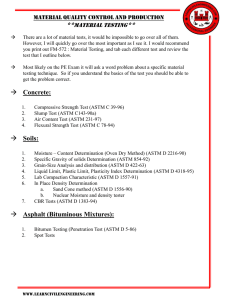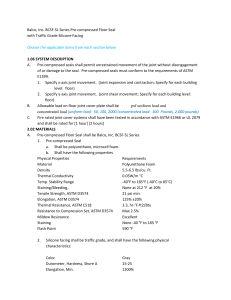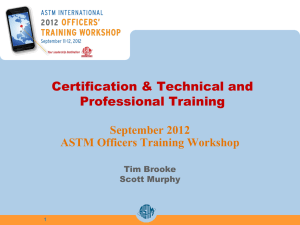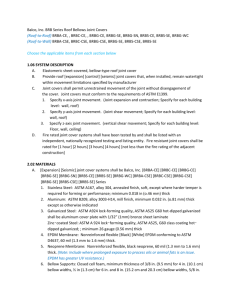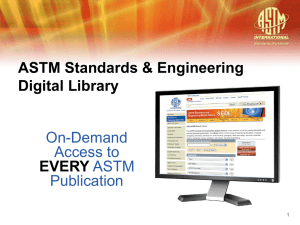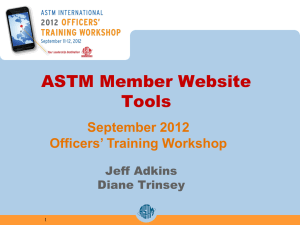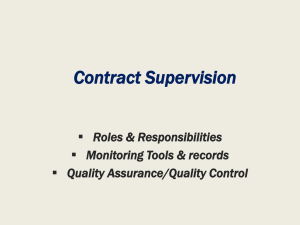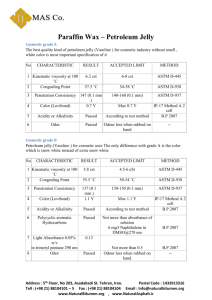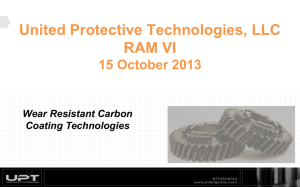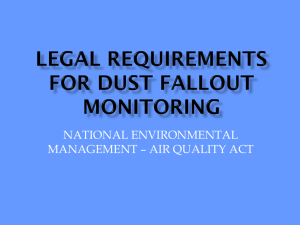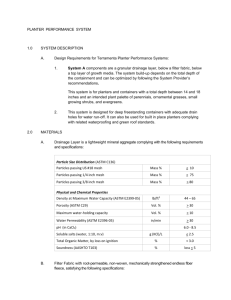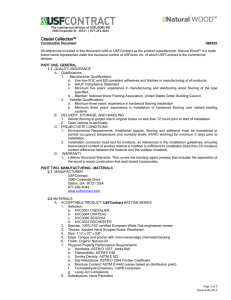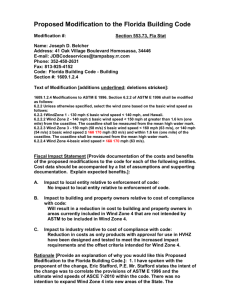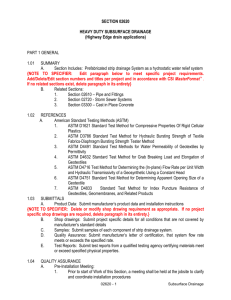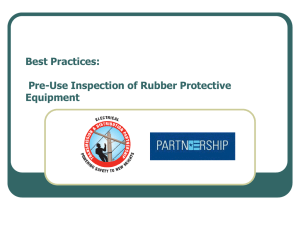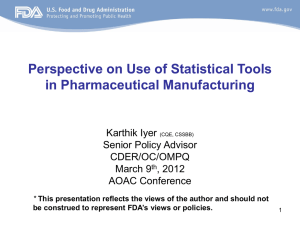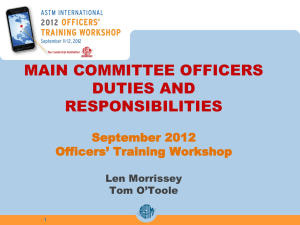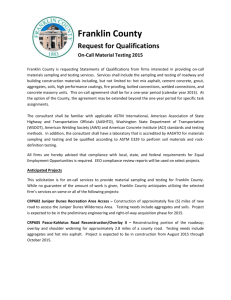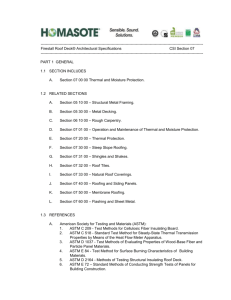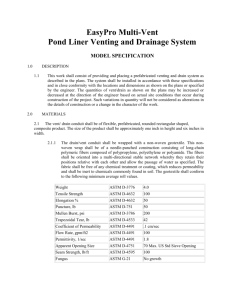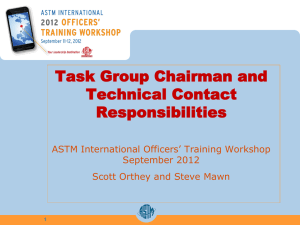ASTM F543 - Accutek Testing Laboratory
advertisement
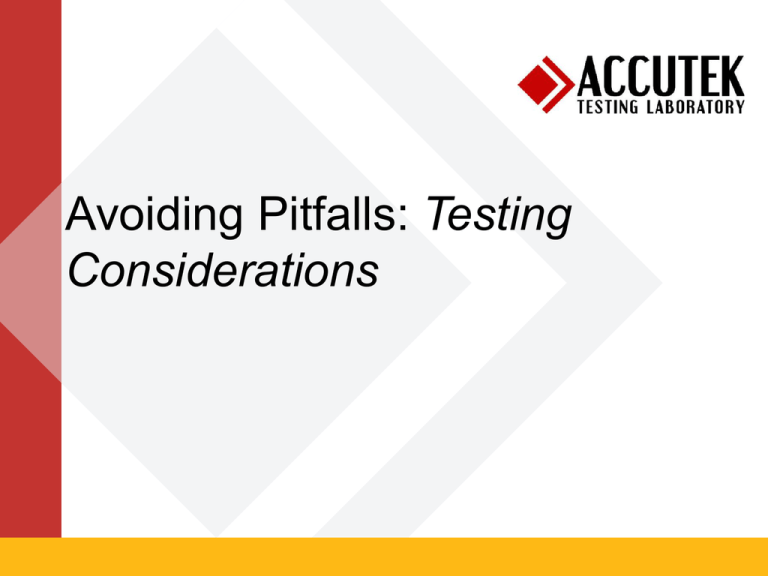
Avoiding Pitfalls: Testing Considerations How Do I Test It? – Which tests? – Which specifications? • ASTM, ISO, Custom Protocols – What size? – How many? – What targets? Minimum Acceptance Criteria? – What predicate devices? How do I test it? Guidance Documents • FDA Guidance Documents: – Guidance for Industry and FDA Staff: Spinal System 510(k)s – Guidance for Industry and FDA Staff - Class II Special Controls Guidance Document: Intervertebral Body Fusion Device • Information about Indications, Mechanical Testing, Wear Testing, Animal and Clinical studies, Sterilization, Worst Case Scenarios, etc. How do I test it? Guidance Documents System Type Anterior, Cervical System Product Code KWQ Recommended Testing Recommended Additional Information •Static and dynamic axial compression bending testing •Static torsion testing •A statement clarifying whether the system is intended for unilateral and/or bilateral fixation •A comparison of the worst case construct’s width and prominence to a predicate system How do I test it? Guidance Documents System Type Vertebral Body Replacement Device/System (VBR) Product Code MQP Recommended Testing Recommended Additional Information Static and dynamic axial compression bending testing · Static and dynamic torsion testing · Expulsion For the dynamic axial compression bending tests, we recommend that you meet one of the following conditions: Depending on the design of the VBR system, we may recommend additional testing (e.g., shear loading of a composite material, off-axis compression loading) · A clinical rationale for all sizes of the proposed VBR ASTM Specifications • Test methods intended to provide a basis for the mechanical comparison among past, present, and future implant assemblies. – – – – – – – – – – Scope Reference Documents Terminology Summary of Test Method Significance and Use Apparatus Sampling Procedure (Starting place for protocol development) Report Precision and Bias (Repeatability) Know your target - Predicate Device & Worst Case Evaluation – Know what predicate values you are targeting ahead of time – Perform testing (feasibility if necessary) – Identify and Evaluate Worst Case Scenario • Finite Element Analysis (FEA) – Allows for quick evaluation of stresses in various loading conditions Static Testing • How much force will it take to break it? – – – – Ultimate force Yield force Stiffness Failure Mode • Differentiates between elastic and plastic deformation regions • Determines starting points for fatigue curve Dynamic Testing (Fatigue) • What is the highest load that will survive a particular cycle count? – Load versus cycle count endurance curve Testing - Common Spine Specifications • Pedicle screw, rod, and hook systems – – – – ASTM F1798 ASTM F1717 ASTM F2706 ASTM F2193 • Spacers and cages – ASTM F2077 – ASTM F2267 • Screws – ASTM F543 ASTM F1798 • Spinal Implant Connection Testing – Flexion/Extension – Axial Slip – Torsional Grip – Transverse Moment ASTM F1717 • Spinal Implant Constructs in Vertebrectomy Model – Static Compression – Dynamic Compression – Static Tension – Static Torsion ASTM F1717 Failure Modes • Common Failures – Screws – Rods – Laser Markings • Laser markings create stress risers • Alpha Case ASTM F2077 • Intervertebral Body Fusion Devices – Static & Dynamic Compression – Static & Dynamic Compression Shear – Static & Dynamic Torsion – Subsidence (ASTM F2267) – Expulsion ASTM F2077- Failure Modes • Static Failure Mode – Plastic Deformation • Dynamic Failure Mode - Fatigue Cracks Wear Testing • Articulating Surfaces, Mixed Material Devices • In vitro Testing – Wear – Mass Loss Analysis – SEM particulate evaluation • Multi-Axis Wear Testing – ISO 18192-1:2011 – Mass Loss Analysis – SEM particulate evaluation Resources Available • Pre-510(k) meeting with the FDA – Draft Guidance for Industry and FDA Staff Medical Devices: The PreSubmission Program and Meetings with FDA Staff • Regulatory and Consulting Agencies – Highly recommended if performing submissions for the first time – Help determine worst case scenario, testing needs, and put together 510(k) submissions • Consult your testing laboratory - Familiar with Specifications (Participate in ASTM) Test similar devices, see newest technologies and methods Provide recommendations based on experience Develop fixturing and protocols
